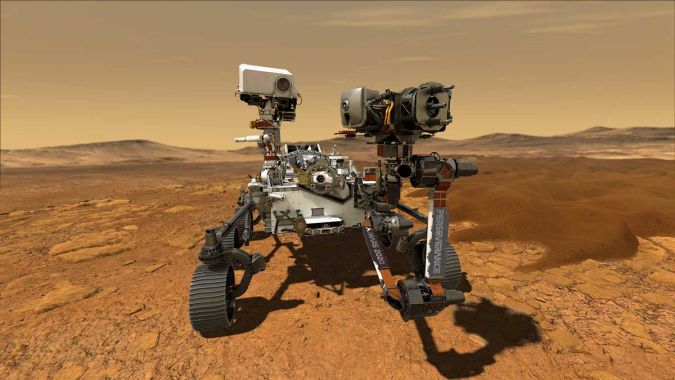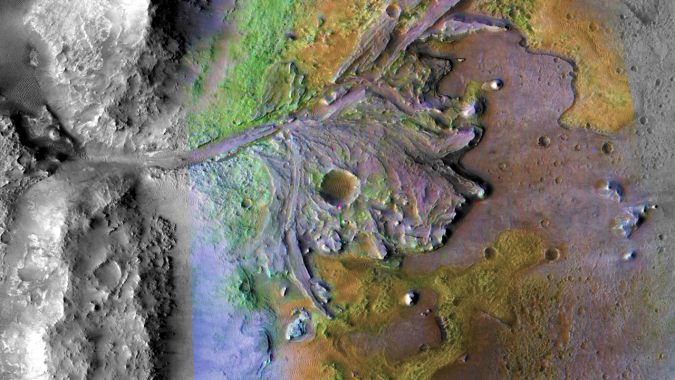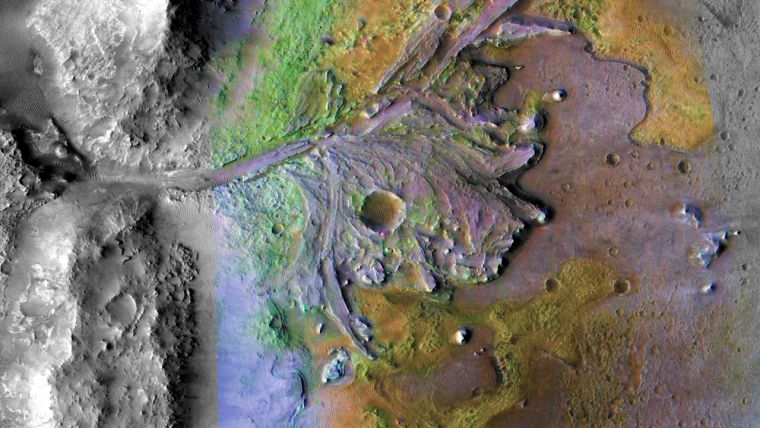NASA’s Perseverance rover confirms ancient lake sediment on Mars using groundbreaking radar technology
Using ground-penetrating radar, NASA’s Perseverance rover has uncovered compelling evidence of ancient lake sediment on Mars. This confirms the longstanding hypothesis that the Red Planet was once a warm, wet environment.
Perseverance’s ground-penetrating radar, called RIMFAX, played a pivotal role in confirming the existence of ancient lake sediment within the Jezero crater. The rover’s scans and radar observations provided scientists with a cross-section of rock layers up to 20m deep, revealing the remnants of a river that once flowed into the crater.
Surprising soil composition
In a study recently published in Science Advances, a team led by UCLA and The University of Oslo uncovered evidence of a crater on Mars that was once filled with water. This ancient lake deposited sediment layers on the crater floor, ultimately giving rise to a significant delta formation as the lake gradually receded. As the lake dissipated over time, it played a role in eroding the crater’s sediments, contributing to the distinctive geological features visible today.
The sediment found in the Jezero crater dates back approximately three billion years. This provides new insights into Mars’ ancient past, when the planet exhibited warmer, wetter conditions that could have been conducive to life. This discovery corroborates earlier studies indicating that Mars underwent a transformation from a warm, wet environment to the cold, arid landscape observed in the present day.
In 2022, Perseverance’s analysis of soil samples in the region yielded unexpected outcomes. Instead of encountering the anticipated sediment, the rover discovered lava rock. However, this discrepancy can be reconciled as volcanic rocks displayed signs of exposure to water, suggesting that sediment erosion may have occurred over time.

RIMFAX’s ground-penetrating radar technology
RIMFAX is the first radar tool to be sent to the surface of Mars on a NASA mission. It is based on ground-penetrating radar technology used on Earth. It enables scientists to ‘see’ below the surface of Mars, providing detailed images of hidden layers of geology up to 30 feet (10m) beneath the surface. The radar can detect various materials, including rock, ice, sediment, water or saltwater, offering insights into Mars’ previous climate conditions.
Equipped with the revolutionary RIMFAX radar, NASA’s Perseverance rover continues to unravel Mars’ mysteries, providing crucial insights into its ancient past and potential habitability. The findings open new avenues for exploration and understanding of this planet.
RIMFAX’s capabilities extend beyond scientific discovery. It also provides valuable information for future human exploration, helping identify water and resources necessary for sustained exploration. For a further look into the technical details of how RIMFAX operates, explaining its use of radio waves, wavelength adjustments, and its ability to analyse radar data to identify underground structures and materials, see here.


Value staying current with geomatics?
Stay on the map with our expertly curated newsletters.
We provide educational insights, industry updates, and inspiring stories to help you learn, grow, and reach your full potential in your field. Don't miss out - subscribe today and ensure you're always informed, educated, and inspired.
Choose your newsletter(s)












